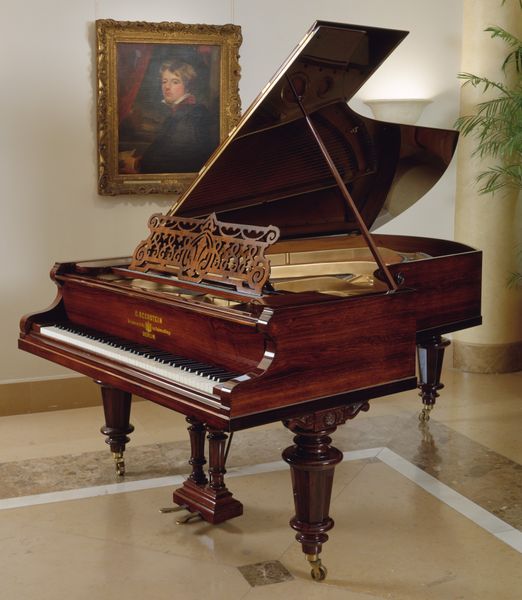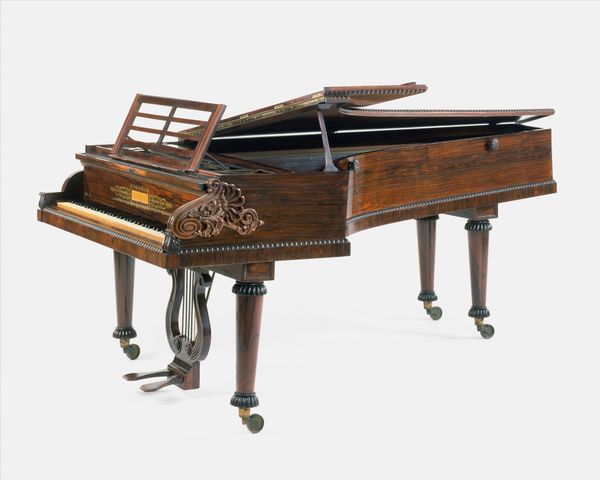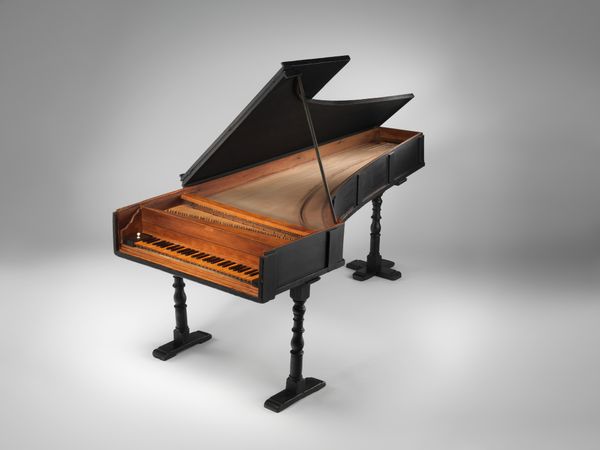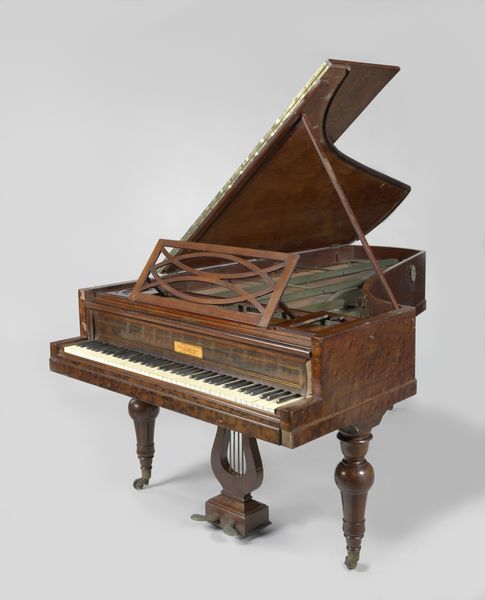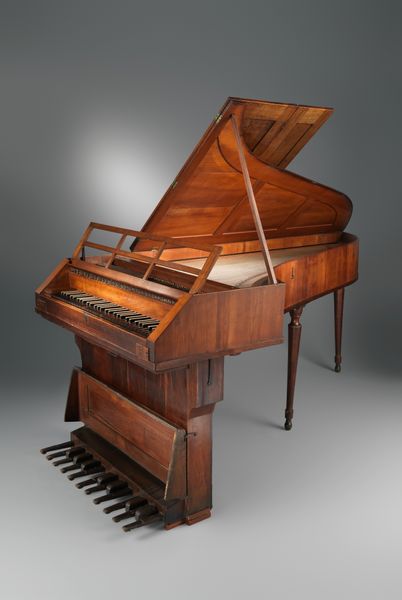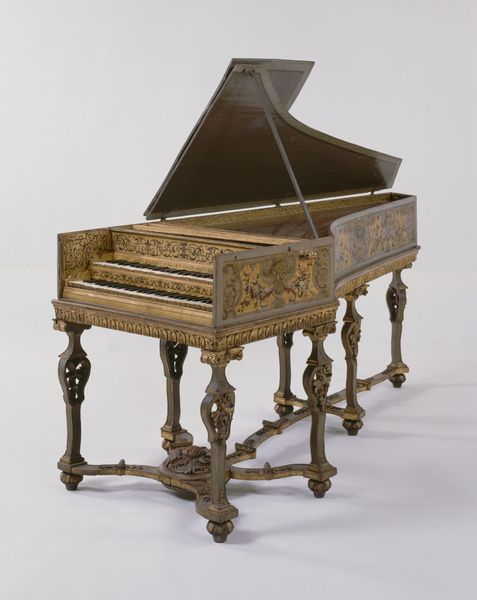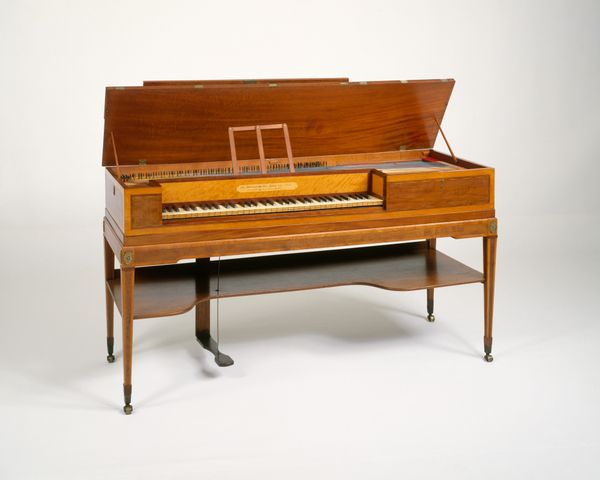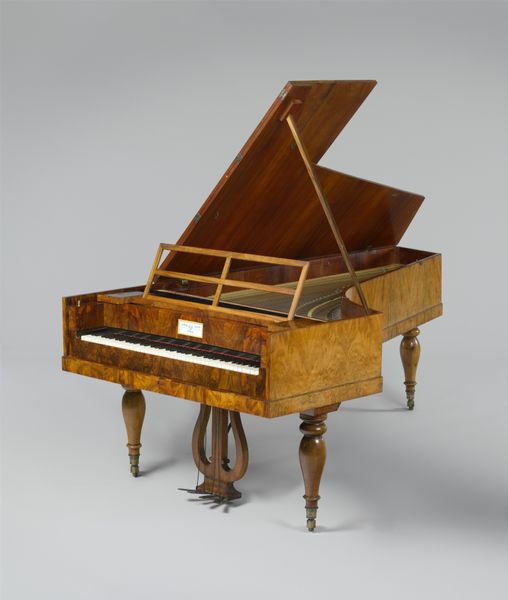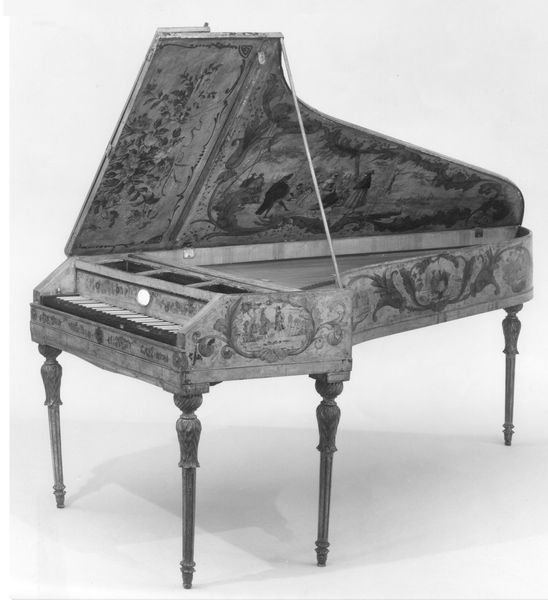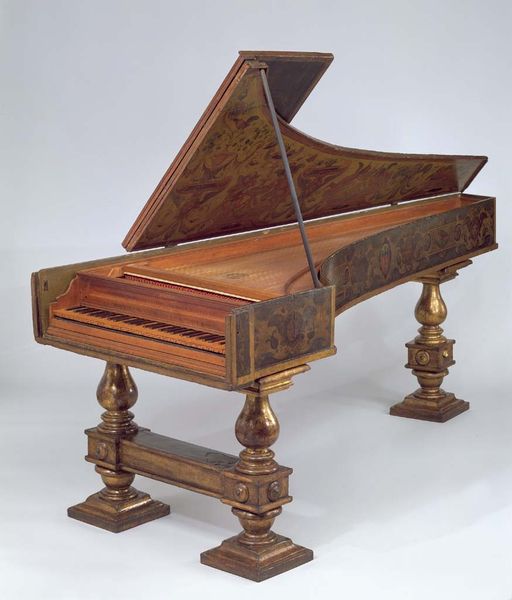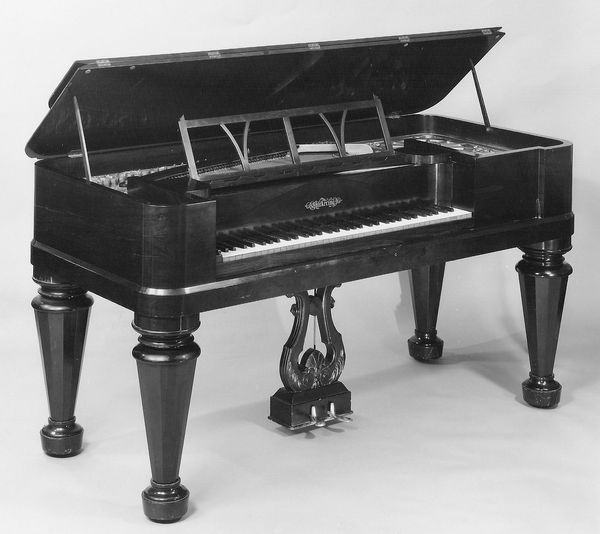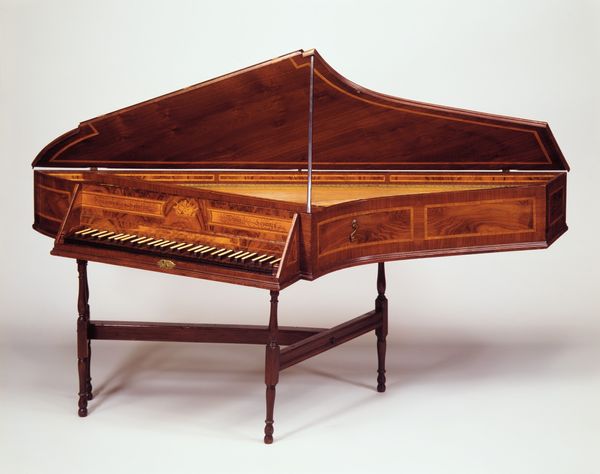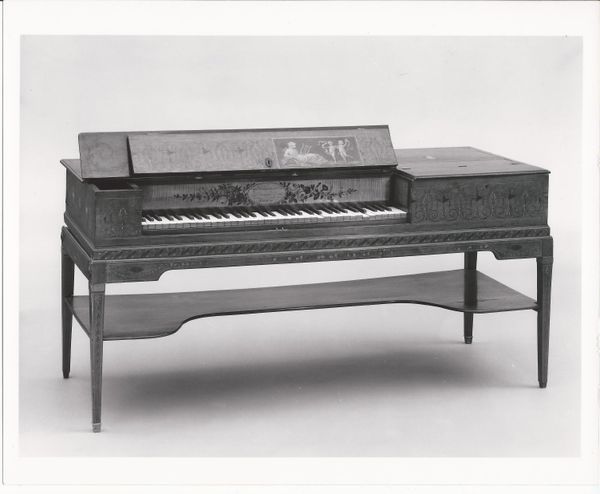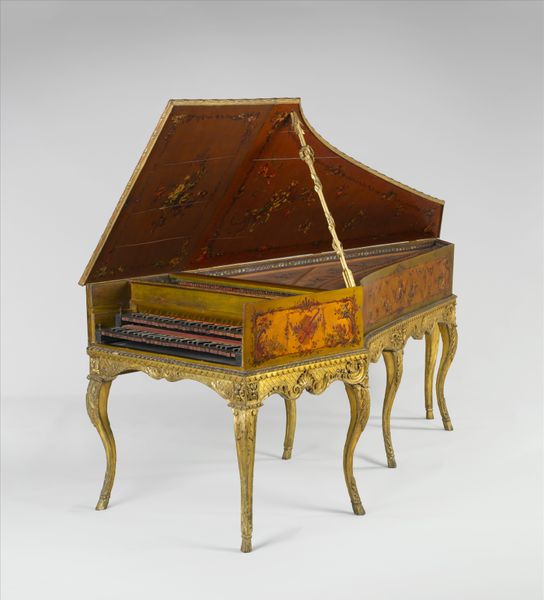
metal, wood
#
portrait
#
metal
#
sculpture
#
united-states
#
wood
#
musical-instrument
#
decorative-art
Dimensions: Depth: 61 5/8 in. (156.5 cm) Length: 256 cm Width: 147 cm Height 99 cm H Body w/o legs: 42 cm
Copyright: Public Domain
Curator: Looking at this instrument, the very first thing that comes to mind is power. The weight and detail...It looks like a beast, capable of magnificent sound, ready to shake any concert hall. Editor: This, as you can see, is a Steinway & Sons grand piano, crafted around 1868. The makers, Steinway, were highly influential in shaping not just piano manufacturing, but also the very culture of American music. They elevated the instrument to a symbol of American progress and artistic achievement. Curator: I see echoes of 19th-century bourgeois aspirations – it's a status symbol manifested through meticulous ornamentation. That carved music rack and those imposing legs speak to a desire for elegance and luxury. Who was this for? Whose stories weren't deemed worthy to be played on such an instrument? Editor: Initially, the company's success was intertwined with the growing music scene and burgeoning middle class, providing instruments to newly established concert halls, educational institutions, and affluent homes. However, we shouldn’t divorce this from a time of great disparities. We need to acknowledge the economic foundations – perhaps exploitative in nature – that enabled the creation and dissemination of such artistry. Curator: Right. Even the material—that gleaming wood—becomes part of the narrative of extraction, of labor. And that polished surface reflects back more than just light; it reflects the structures that upheld its creation. Who had access to that beauty? Who did not? Whose labor allowed this leisure? It calls out to the unexamined structures of power embedded in this opulent display. Editor: And thinking about these pianos' impact beyond just personal luxury, we see they democratized access to music through innovations that improved affordability and sound projection in large public spaces. It's a conflicting dynamic - luxury and exclusivity existed alongside widespread musical appreciation, expanding opportunities and creative horizons for artists from diverse socioeconomic backgrounds. Curator: Yes. I still cannot look at this piece and not be conscious of the cultural biases implicit in the idea of “high art.” How does something like this shape our perception of musical expression, and who is deemed worthy of engaging with it? It prompts more questions than answers, for sure. Editor: It's a lens through which we can begin to analyze the relationship between material culture, the evolution of art markets, and the persistent social tensions within even the most beautiful creations. Thank you for pointing toward the vital perspectives and complexities, which hopefully will encourage deeper dialogue among us.
Comments
No comments
Be the first to comment and join the conversation on the ultimate creative platform.
